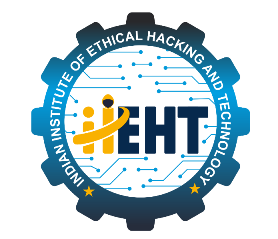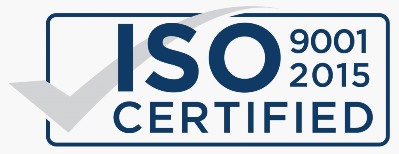AWS - Amazon Web Services

Book a FREE Trial Class
Training Available 24*7 Call at +91 81780 71995
AWS - Amazon Web Services
Module 1. Linux Fundamentals
❖ Overview of all basic commands
❖ Vim editor modes
❖ Filesystem hierarchy – Basic topics
❖ File and directories creation
❖ Grep
❖ Filter commands (head, tail, more, less)
❖ Creating users and groups
❖ Important files related
❖ Modifying, deleting users and group
❖ Linux permissions
❖ Basic permissions overview
❖ Software management
❖ Yellowdog update modifier(yum)
❖ Yum commands
❖ Different runlevels
❖ Services and daemons
Module 2. Why Cloud ?
❖ Introduction to Cloud and Cloud Computing
❖ Identify the features and benefits of cloud computing
❖ Different types of Cloud Computing deployment model
❖ Public Cloud, Private Cloud, Hybrid Cloud
❖ Virtualization – An essential in cloud
❖ Virtualization in Cloud model
❖ Different types of virtualization
❖ Hypervisor – Benefits
❖ Different types of services in Cloud computing
❖ IaaS, PaaS, SaaS
❖ Importance of scaling in cloud computing
❖ Different types of scaling and its applications
❖ Issues we overcome using cloud and applications
❖ Cost model that we use in cloud computing
Module 3. AWS – An overview
❖ Describe the features of AWS
❖ The features of AWS marketplace
❖ Describe the features of Amazon Compute Services
❖ Describe the features of Amazon Storage Services
❖ Describe the features of Amazon Network Services
❖ Describe the features of Amazon Database services
❖ Describe about various services in AWS
❖ Global Infrastructure – Regions and Availability Zones
❖ Create a free tier account in AWS and onboarding
❖ Introduction AWS management console
Module 4.Understand Identity Access Management of AWS
❖ Protect your AWS by different authentication system
❖ Password policies set for users
❖ AWS User Account and Groups in detail
❖ Creating custom policies in AWS
❖ Introduction about Roles and its use
❖ Creating Roles and associating policies
❖ Creating programmatic access & management console access for users
❖ Associating policies to the user and groups
Module 5. EC2 Instance
❖ Describe AMI and AWS Marketplace templates
❖ Launch a basic EC2 instance
❖ Different types of Instances Reserved, On-demand, Spot, Dedicated
❖ Security groups and tags for EC2 instance
❖ Private key introduction & protecting EC2 with keys
❖ Attaching and detaching EBS volumes
❖ Launch an ec2 instance from an AMI
❖ Create custom AMI and working with different region
❖ Make use of amazon EBS volume and create snapshots
❖ Manage the configuration of your application
❖ Deploying a new instance from the created AMI
Module 6. Auto-scaling
❖ Get Started with Auto Scaling Using the Console
❖ Creating Launch configurations & make use of it for autoscaling groups
❖ Maintain a Fixed Number of Running EC2 Instances
❖ Dynamic Scaling
❖ The lifecycle of autoscaling
❖ Policies of autoscaling
Module 7. Load Balancing
❖ Introduction to Loadbalancer (ELB)
❖ Different types of Load Balancer in AWS
❖ Application LB
❖ Network LB
❖ Classic LB
❖ Migrating classic load balancer to new load balancer
❖ Components and types of load balancing
Module 8. EBS (Elastic Block Storage)
❖ Create EBS volumes
❖ Delete EBS Volumes
❖ Attach and detach EBS volumes with EC2 instance
❖ Creating and deleting snapshots
Module 9. Object Storage in Cloud
❖ Understanding S3 durability and redundancy
❖ Introduction about S3 Buckets
❖ How S3 Uploading works and how to Download
❖ How to S3 Permissions
❖ Implement S3 Object Versioning S3 Lifecycle Policies
❖ Storage Gateway
❖ Import Export
❖ S3 Transfer Acceleration
❖ Glacier storage
Module 10. CloudFront
❖ Describing cloud front
❖ Creating a cloud front distribution
❖ Hosting a website of cloud front distribution
❖ Implementing global restrictions
❖ Configuring origins and behaviors
Module 11. Route53
❖ Describe Hosted zones and Domain name understanding
❖ How to create hosted zones
❖ Hosting a website with custom domain name
❖ Understanding routing policies
Module 12. AWS Security Management
❖ Describing Security Practices for Cloud Deployment
❖ AWS Shared Responsibilities and Securities
❖ Importance of Cloud Trail
❖ Describing Trust advisor
Module 13. Amazon Virtual Private Cloud (VPC)
❖ Introduction to Amazon Virtual Private Cloud (VPC).
❖ VPC Advantages and understanding IP addressing CIDR
❖ Default and Non-default VPC
❖ Different Components in VPC
❖ Describe, create, and manage Amazon Virtual Private Cloud
❖ Amazon VPC, Private Subnet, and Public Subnet
❖ AWS Networking, Security Groups, and Network ACLs
❖ Configuration and management of VPN connectivity
❖ Subnet and Subnet Mask
Module 14. Relational Database Service (RDS)
❖ Introduction to RDS
❖ Different database services of AWS: Amazon RDS, Dynamo DB, Redshift etc.
❖ Create MYSQL RDS Instance
❖ Oracle RDS Instance
❖ MS SQL RDS Instance
❖ Configuring the database
❖ Configuring backups
❖ Configuring the maintenance windows
❖ Connecting to the database
Module 15. DynamoDB
❖ Creating a dynamo dB
❖ Adding data manually
❖ Learn about strong and eventual consistency
❖ Calculating Read write consistency
❖ Configuring alarms
Module 16. Monitoring Services
❖ Knowledge on Cloud watch – A monitoring service
❖ Create and Configuring Monitoring services
❖ How to perform Setting thresholds and Configuring actions
❖ Creating a cloud watch alarm
❖ Getting statistics for ec2 instances
❖ Monitoring other AWS services
❖ Configuring Notifications
❖ Integrating cloud watch with Auto scaling
Module 17. Application Services – An Overview
❖ What is SNS
❖ Creating a topic
❖ Create subscription
❖ Subscribed to the subscription
❖ SQS & SES
❖ Lambda and Elastic Beanstalk
Module 18. AWS Troubleshooting
❖ Troubleshooting EC2 instance
❖ Troubleshooting using Cloud watch
❖ Troubleshooting using ELB
❖ Troubleshooting by using Cloud front
Module 19. AWS Architecture and Design
❖ Backup and Disaster Recovery
❖ How to manage Disaster Recovery and Backups
❖ Best Practice for Disaster Recovery and Backups
❖ AWS High Availability Design
Module 20. DevOps Fundamentals
❖ An understanding of DevOps and the modern DevOps toolsets



